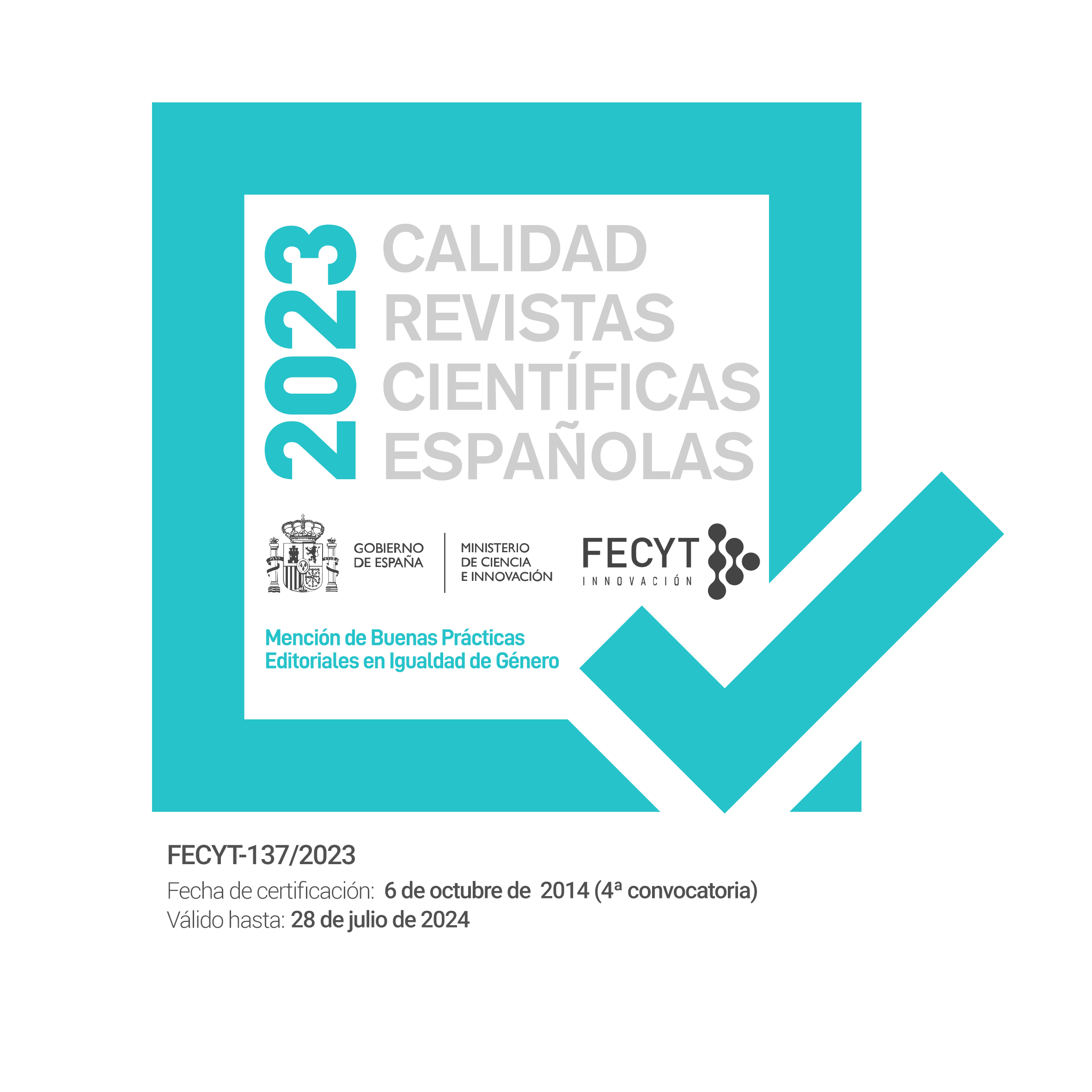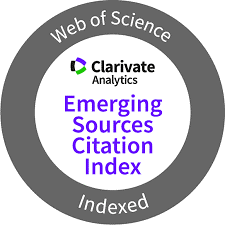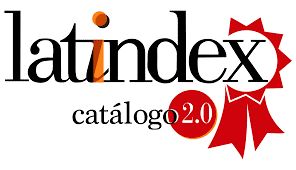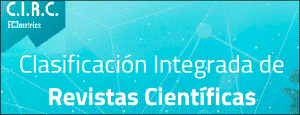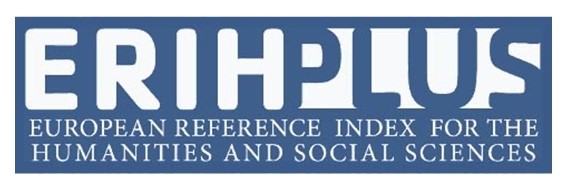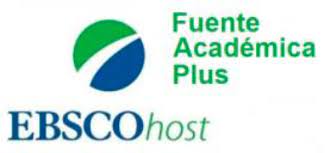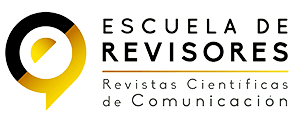Revisión bibliográfica de la marca corporativa: hacia una definición y gestión integradoras
DOI:
https://doi.org/10.31921/doxacom.n32a8Palabras clave:
Marca corporativa, comunicación, marketing, análisis de contenidoResumen
La marca corporativa es un activo intangible y estratégico de gran valor que se vincula a conceptos como identidad e imagen. Esto le ha supuesto la atención de diversas disciplinas, no solo de la comunicación. El objetivo de este trabajo es identificar dichas disciplinas, autores destacados, ofrecer una definición integradora de la marca corporativa, identificar conceptos relacionados y el área a la que se asigna su gestión. Se trata de arrojar luz sobre la importancia de una adecuada gestión de la marca corporativa. Para ello, se ha realizado una revisión bibliográfica sistematizada de los trabajos académicos publicados durante el periodo 2016-2018. Sobre ellos se aplica un análisis de contenido cuantitativo y cualitativo. Tras la revisión de 112 publicaciones académicas en 66 revistas, se observa la escasa aportación del área de la comunicación en contraste con la gestión y el marketing, de donde proceden también los autores más citados. Respecto a la gestión de la marca corporativa, destaca el papel de la alta dirección y el área de marketing. La variedad temática de las aportaciones y el valor estratégico de la marca corporativa sugieren la necesidad de aportar un enfoque multidisciplinar en la gestión y estudio de la marca corporativa.
Descargas
Citas
Aaker, D. A. (1991). Managing Brand Equity: Capitalizing on the Value of a Brand Name. New York: Free Press. https://doi.org/10.2307/1252048
Aaker, D. A. (2004). Leveraging the Corporate Brand. California management review, 46(3), 1–14.
Aaker, D. A., & Joachimsthaler, E. (2000). The Brand Relationship Spectrum: The key to the brand architecture challenge. California Management Review, 42(4), 8–23. Retrieved from https://eds.a.ebscohost.com/eds/pdfviewer/pdfviewer?vid=1&sid=8b0f45e6-88f4-47e5-8c9a-28e138794a27%40sdc-v-sessmgr04
Abratt, R., & Kleyn, N. (2012). Corporate identity, corporate branding and corporate reputations: Reconciliation and integration. European Journal of Marketing, 46(7/8), 1048–1063. https://doi.org/10.1108/03090561211230197
Alwi, S. F. S., Ali, S. M., & Nguyen, B. (2017). The Importance of Ethics in Branding: Mediating Effects of Ethical Branding on Company Reputation and Brand Loyalty. Business Ethics Quarterly, 27(3), 393–422. https://doi.org/10.1017/beq.2017.20
Anisimova, T. (2016). The effects of corporate brand symbolism on consumer satisfaction and loyalty: Evidence from Australia. Asia Pacific Journal of Marketing and Logistics, 28(3), 481–498. https://doi.org/10.1108/APJML-05-2015-0086
Argenti, P. A., & Druckenmiller, B. (2004). Reputation and the Corporate Brand. Corporate Reputation Review, 6(4), 368–374. https://doi.org/10.1057/palgrave.crr.1540005
Balmer, J. M. T., & Soenen, G. B. (1997). Operationalising the Concept of Corporate Identity: Articulating the Corporate Identity Mix and the Corporate Identity Management Mix. (D. of M. University of Strathclyde, Ed.). Glasgow. Retrieved from https://eds.a.ebscohost.com/eds/detail/detail?vid=3&sid=8599e69a-bd28-4386-9b1f-180d7cc28fbf%40sdc-v-sessmgr03&bdata=JkF1dGhUeXBlPWlwLHVybCZsYW5nPWVzJnNpdGU9ZWRzLWxpdmUmc2NvcGU9c2l0ZQ%3D%3D#AN=edseul.3000076240645&db=edseul
Balmer, J. M. T. (1995). Corporate Branding and Connoisseurship. Journal of General Management, 21(1), 24–46. https://doi.org/10.1177/030630709502100102
Balmer, J. M. T. (1998). Corporate Identity and the Advent of Corporate Marketing. Journal of Marketing Management, 14(8), 963–996. https://doi.org/10.1362/026725798784867536
Balmer, J. M. T. (2001a). Corporate identity, corporate branding and corporate marketing ‐ Seeing through the fog. European Journal of Marketing, 35(3/4), 248–291. https://doi.org/10.1108/03090560110694763
Balmer, J. M. T. (2001b). The Three Virtues and Seven Deadly Sins of Corporate Brand Management. Journal of General Management. https://doi.org/10.1177/030630700102700101
Balmer, J. M. T. (2008a). An epiphany of three: corporate identity, corporate brand management, and corporate marketing. In Routledge (Ed.), Facets of corporate Identity, Communication and reputation (pp. 35–54). Abingdon, UK: Taylor & Francis Group.
Balmer, J. M. T. (2008b). Identity based views of the corporation: Insights from corporate identity, organisational identity, social identity, visual identity, corporate brand identity and corporate image. European Journal of Marketing, 42(9/10), 879–906. https://doi.org/10.1108/03090560810891055
Balmer, J. M. T. (2010). Explicating corporate brands and their management: Reflections and directions from 1995. Journal of Brand Management, 18(3), 180–196. https://doi.org/10.1057/bm.2010.46
Balmer, J. M. T. (2011). Corporate marketing myopia and the inexorable rise of a corporate marketing logic: Perspectives from identity‐based views of the firm. European Journal of Marketing, 45(9/10), 1329–1352. https://doi.org/10.1108/03090561111151781
Balmer, J. M. T., Abratt, R., & Kleyn, N. (2016). Corporate brands and corporate marketing: Emerging trends in the big five eco-system. Journal of Brand Management, 23(1), 3–7. https://doi.org/10.1057/bm.2015.51
Balmer, J. M. T., & Chen, W. (2016). Corporate heritage tourism brand attractiveness and national identity. Journal of Product and Brand Management, 25(3), 223–238. https://doi.org/10.1108/JPBM-08-2015-0959
Balmer, J. M. T., & Gray, E. R. (2003). Corporate brands: what are they? What of them? European Journal of Marketing, 37(7/8), 972–997. https://doi.org/10.1108/03090560310477627
Balmer, J. M. T., & Greyser, S. A. (2006). Corporate marketing: Integrating corporate identity, corporate branding, corporate communications, corporate image and corporate reputation. European Journal of Marketing, 40(7/8), 730–741. https://doi.org/10.1108/03090560610669964
Balmer, J. M. T., Powell, S. M., & Greyser, S. A. (2011). Explicating Ethical Corporate Marketing. Insights from the BP Deepwater Horizon Catastrophe: The Ethical Brand that Exploded and then Imploded. Journal of Business Ethics, 102(1), 1–14. https://doi.org/10.1007/s10551-011-0902-1
Balmer, J. M. T., Powell, S. M., Kernstock, J., & Brexendorf, T. O. (2017). Advances in Corporate Branding. Advances in Corporate Branding. London. https://doi.org/10.1057/978-1-352-00008-5
Balmer, J. M. T. (2017). The corporate identity, total corporate communications, stakeholders’ attributed identities, identifications and behaviours continuum. European Journal of Marketing, 51(9/10), 1472–1502. https://doi.org/10.1108/EJM-07-2017-0448
Balmer, J. M. T., & Wang, W. Y. (2016a). The corporate brand and strategic direction: Senior business school managers’ cognitions of corporate brand building and management. Journal of Brand Management, 23(1), 8–21. https://doi.org/10.1057/bm.2015.45
Balmer, J. M. T., & Wang, W. Y. (2016b). Why Business School Managers are a Key Corporate Brand Stakeholder Group. International Studies of Management and Organization, 46(4), 247–255. https://doi.org/10.1080/00208825.2016.1140521
Bawa, A., & Saha, A. (2016). Strength of corporate social responsibility as a corporate brand association: general public perspective. Decision, 43(4), 313–332. https://doi.org/10.1007/s40622-016-0125-5
Biraghi, S., & Gambetti, R. C. (2015). Corporate branding: Where are we? A systematic communication-based inquiry. Journal of Marketing Communications, 21(4), 260–283. https://doi.org/10.1080/13527266.2013.768535
Brexendorf, T. O., & Keller, K. L. (2017). Leveraging the corporate brand: The importance of corporate brand innovativeness and brand architecture. European Journal of Marketing, 51(9/10), 1530–1551. https://doi.org/10.1108/EJM-07-2017-0445
Brown, T. J., Dacin, P. A., Pratt, M. G., & Whetten, D. A. (2006). Identity, intended image, construed image, and reputation: An interdisciplinary framework and suggested terminology. Journal of the Academy of Marketing Science, 34(2), 99–106. https://doi.org/10.1177/0092070305284969
Buil, I., Catalán, S., & Martínez, E. (2016). The importance of corporate brand identity in business management: An application to the UK banking sector. BRQ Business Research Quarterly, 19(1), 3–12. https://doi.org/10.1016/j.brq.2014.11.001
Capriotti, P. (2013). Planificacion estrategica de la imagencorporativa. (IIRP - Instituto de Investigación en Relaciones Públicas, Ed.) (4ta ed.). Malaga. Retrieved from http://www.bidireccional.net
Codina, L. (2018). Revisiones sistematizadas para trabajos académicos: Conceptos, fases y bibliografía. Retrieved from https://www.lluiscodina.com/revisiones-sistematizadas-fundamentos/
Cornelissen, J. (2008). Corporate Communication: A Guide to Theory and Practice. (2nd ed.). Los Angeles: SAGE.
Costa, J. (1994). Imagen global : evolución del diseño de identidad. CEAC.
Costa, J. (2001). Imágen corporativa en el siglo XXI. La Crujía.
Daffey, A., & Abratt, R. (2002). Corporate branding in a banking environment. Corporate Communications: An International Journal, 7(2), 87–91. https://doi.org/10.1108/13563280210426142
Dall’Olmo Riley, F., & de Chernatony, L. (2000). The Service Brand as Relationships Builder. British Journal of Management, 11(2), 137–150. https://doi.org/10.1111/1467-8551.t01-1-00156
Dunnion, B., & Knox, S. (2004). UNDERSTANDING AND MANAGING CORPORATE BRANDS: A SYSTEM DYNAMICS PERSPECTIVE. Retrieved from https://core.ac.uk/download/pdf/140266.pdf
Einwiller, S., & Will, M. (2002). Towards an integrated approach to corporate branding – an empirical study. Corporate Communications: An International Journal, 7(2), 100–109. https://doi.org/10.1108/13563280210426160
Ferilli, G., Sacco, P. L., Teti, E., & Buscema, M. (2016). Top corporate brands and the global structure of country brand positioning: An AutoCM ANN approach. Expert Systems with Applications, 66, 62–75. https://doi.org/10.1016/j.eswa.2016.08.054
Fetscherin, M., & Usunier, J. (2012). Corporate branding: an interdisciplinary literature review. European Journal of Marketing, 46(5), 733–753. https://doi.org/10.1108/03090561211212494
González-Oñate, C. (2008). Cuatro: la nueva estrategia de marca televisiva para conectar con los jóvenes. Comunicar, XVI, 357–366. https://doi.org/10.3916/c31-2008-03-018
Harris, F., & de Chernatony, L. (2001). Corporate branding and corporate brand performance. European Journal of Marketing, 35(3/4), 441–456. https://doi.org/10.1108/03090560110382101
He, H.-W., & Balmer, J. M. T. (2006). Alliance brands: Building corporate brands through strategic alliances?, 13(4), 16.
Heller, M. (2016). “Outposts of Britain” the General Post Office and the birth of a corporate iconic brand, 1930-1939. European Journal of Marketing, 50(3–4), 358–376. https://doi.org/10.1108/EJM-11-2014-0691
Iglesias, O., & Saleem, F. Z. (2015). How to support consumer-brand relationships: The role of corporate culture and human resource policies and practices. Marketing Intelligence & Planning, 33(2), 216–234. https://doi.org/10.1108/MIP-10-2014-0196 Ind, N. (1997). The corporate brand. New York University Press.
Jo Hatch, M. J., & Schultz, M. (2001). Are the strategic stars aligned for your corporate brand? Harvard Business Review, 79(2).
Jo Hatch, M., & Schultz, M. (2003a). Bringing the corporation into corporate branding. European Journal of Marketing, 37(7/8), 1042–1064. https://doi.org/10.1108/03090560310477654
Jo Hatch, M., & Schultz, M. (2003b). Bringing the corporation into corporate branding. European Journal of Marketing. https://doi.org/10.1108/03090560310477654
Kay, M. J. (2006). Strong brands and corporate brands. European Journal of Marketing, 40(7/8), 742–760.
Keller, K. L., & Aaker, D. A. (1998). The Impact of Corporate Marketing on a Company’s Brand Extensions. Corporate Reputation Review, 1(4), 356–378. https://doi.org/10.1057/palgrave.crr.1540057
King, S. (1991). Brand-building in the 1990s. Journal of Marketing, 7, 3–13. Retrieved from https://content.ebscohost.com/ContentServer.asp?T=P&P=AN&K=17429668&S=R&D=bsu&EbscoContent=dGJyMMTo50Sep7A4v%2BbwOLCmr1GeprFSsaq4S7eWxWXS&ContentCustomer=dGJyMPGpsku1p69PuePfgeyx43zx
Knox, S., & Bickerton, D. (2003). The six conventions of corporate branding. European Journal of Marketing, 37(7/8), 998–1016. https://doi.org/10.1108/03090560310477636
Koporcic, N., & Halinen, A. (2018). Interactive Network Branding. IMP Journal, 12(2), 392–408. https://doi.org/10.1108/IMP-05-2017-0026
Machi, L. y McEvoy, B. (2009) The literature review: six steps to success. Thousand Oaks, Ca: Sage.
Malmelin, N., & Moisander, J. (2014). Brands and Branding in Media Management-Toward a Research Agenda. JMM International Journal on Media Management. https://doi.org/10.1080/14241277.2014.898149
Markovic Markovic, S., Iglesias Bedós, O., Singh, J., & Sierra Olivera, V. (2018). How does the perceived ethicality of corporate service brands influence loyalty and positive word-of-mouth? Analyzing the roles of empathy, affective commitment, and perceived quality - ESADE Knowledge. Journal of Business Ethics, 148(4), 721–740. Retrieved from http://www.esadeknowledge.com/view/how-does-the-perceived-ethicality-of-corporate-service-brands-influence-loyalty-and-positive-word-of-mouth-analyzing-the-roles-of-empathy-affective-commitment-and-perceived-quality-187998
Melewar, T. ., & Jenkins, E. (2002). Defining the Corporate Identity Construct. Corporate reputation review, 5(11), 76–91. Retrieved from https://content.ebscohost.com/ContentServer.asp?T=P&P=AN&K=6876701&S=R&D=bsu&EbscoContent=dGJyMNLr40SeqLU4v%2BvlOLCmr1GeprRSr624SLSWxWXS&ContentCustomer=dGJyMPGpsku1p69PuePfgeyx43zx
Merrilees, B. (2017). Experience-centric branding: Challenges and advancing a new mantra for corporate brand governance. Journal of Brand Management, 24(1), 1–13. https://doi.org/10.1057/s41262-017-0027-7
Mingione, M. (2015). "Inquiry into corporate brand alignment: a dialectical analysis and directions for future research". Journal of Product & Brand Management, Vol. 24 Issue: 5, 518-536, https://doi.org/10.1108/JPBM-05-2014-0617
Mohan, M., Voss, K. E., Jiménez, F. R., & Gammoh, B. S. (2018). Corporate brands as brand allies. Journal of Product and Brand Management, 27(1), 41–56. https://doi.org/10.1108/JPBM-01-2016-1080
Monfort de Bedoya, A., & Villagra García, N. (2014). Claves para entender la marca corporativa. Fe d’erratas.
Podnar, K. (2015). Corporate Communication: A marketing viewpoint. New York, NY: Routledge, Taylor & Francis Group
Santos, F. P., Burghausen, M., & Balmer, J. M. T. (2016). Heritage branding orientation: The case of Ach. Brito and the dynamics between corporate and product heritage brands. Journal of Brand Management, 23(1), 67–88. https://doi.org/10.1057/bm.2015.48
Schmidt, H. J., & Redler, J. (2018). How diverse is corporate brand management research? Comparing schools of corporate brand management with approaches to corporate strategy. Journal of Product & Brand Management, 27(2), 185–202. https://doi.org/10.1108/JPBM-05-2017-1473
Schroeder, J. E. (2017). Corporate branding in perspective: a typology. European Journal of Marketing, 51(9–10), 1522–1529. https://doi.org/10.1108/EJM-07-2017-0450
Schultz, M., Antorini, Y. M., & Csaba, F. F. (2005). Corporate branding : purpose/people/process : towards the second wave of corporate branding. Copenhagen Business School Press.
Schultz, M., & de Chernatony, L. (2002). Introduction. The Challenges of Corporate Branding. Corporate Repputation Review, 5(2/3), 105–112. Retrieved from https://content.ebscohost.com/ContentServer.asp?T=P&P=AN&K=7539206&S=R&D=bsu&EbscoContent=dGJyMMvl7ESep7M4yOvqOLCmr1GeprZSsae4SK%2BWxWXS&ContentCustomer=dGJyMPGpsku1p69PuePfgeyx43zx
Schwaiger, M., & Sarstedt, M. (2011). Corporate branding in a turbulent environment. Journal of Brand Management, 19(3), 179–181. https://doi.org/10.1057/bm.2011.35
Sevel, L., Abratt, R., & Kleyn, N. (2018). Managing across a corporate and product brand portfolio: evidence from a large South African service organization. Journal of Product and Brand Management, 27(1), 18–28. https://doi.org/10.1108/JPBM-05-2016-1182
Shahri, M. H. (2011). The effectiveness of corporate branding strategy in multi business companies. Australian Journal of Business and Management Research, 1(16), 51–59.
Sierra, V., Iglesias, O., Markovic, S., & Singh, J. J. (2017). Does Ethical Image Build Equity in Corporate Services Brands? The Influence of Customer Perceived Ethicality on Affect, Perceived Quality, and Equity. Journal of Business Ethics, 144(3), 661–676. https://doi.org/10.1007/s10551-015-2855-2
Sørensen, A. R., Korsager, E. M., & Heller, M. (2018). A bittersweet past: The negative equity of corporate heritage brands. Journal of Consumer Culture, 0(0), 1–19. https://doi.org/10.1177/1469540518773803
Stuart, H. J. (2011). An identity-based approach to the sustainable corporate brand. Corporate Communications, 16(2), 139–149. https://doi.org/10.1108/13563281111141660
Sujchaphong, N., Nguyen, B., & Melewar, T. C. (2017). Towards a branding oriented higher education sector: An overview of the four perspectiver on university marketing studies. The Marketing Review, 17(1), 87–116. https://doi.org/10.1362/146934717X14909733966128
Törmälä, M., & Gyrd-Jones, R. I. (2017). Development of new B2B venture corporate brand identity: A narrative performance approach. Industrial Marketing Management, 65(May), 76–85. https://doi.org/10.1016/j.indmarman.2017.05.002
Uggla, H. (2006). The corporate brand association base: A conceptual model for the creation of inclusive brand architecture Article information. European Journal of Marketing, 40(7/8), 785–802. https://doi.org/10.1108/03090560610669991
Urde, M., Greyser, S. A., & Balmer, J. M. T. (2007). Corporate brands with a heritage. Journal of Brand Management, 15(1), 4–19. https://doi.org/10.1057/palgrave.bm.2550106
Vallaster, C., Lindgreen, A., & Maon, F. (2012). Strategically Leveraging Corporate Social Responsibility: A Corporate Branding Perspective. California Management Review, 54(3), 34–60. https://doi.org/10.1525/cmr.2012.54.3.34
van Riel, C. B. M. (1995). Principles of corporate communication. Prentice Hall.
van Riel, C. B. M., & Fombrun, C. J. (2008). Essentials of corporate communication : implementing practices for effective reputation management. London ; New York: Routledge.
Villafañe, J. (1998). Imagen positiva : gestión estratégica de la imagen de las empresas. Madrid: Pirámide.
Villafañe, J. (2012). La buena empresa: propuesta para una teoría de la reputación corporativa. Madrid: Pearson Educacion.
Villafañe Justo. (1999). La Gestión profesional de la imagen corporativa. Madrid: Piramide
Villagra, N., López, B., & Monfort, A. (2015). La gestión de intangibles y la marca corporativa: ¿ha cambiado algo en la relación entre las empresas y la sociedad? Revista Latina de Comunicacion Social, 70, 793–812. https://doi.org/10.4185/RLCS-2015-1072
Wiedmann, K.-P., Hennigs, N., Schmidt, S., & Wuestefeld, T. (2011). The importance of brand heritage as a key performance driver in marketing management. Journal of Brand Management, 19(3), 182–194. https://doi.org/10.1057/bm.2011.36
Wimmer, R., & Dominick, J. (2011). Mass media research General Mass Communication (9th ed.). Boston: Wadsworth, Cengage Learning.
Descargas
Publicado
Cómo citar
Número
Sección
Licencia

Esta obra está bajo una licencia internacional Creative Commons Atribución-NoComercial 4.0.




